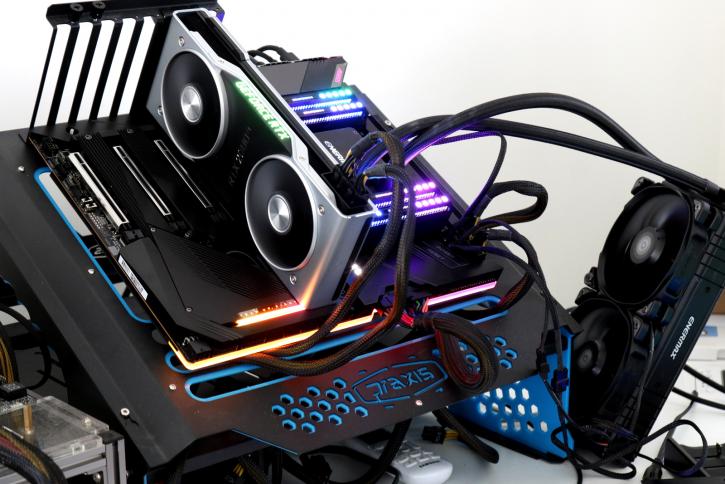Introduction
Aorus TRX40 Xtreme ≥ Gigabyte
With all that mega-core galore on the Threadripper 3000 processor releases, a new baby chipset has been born, T-Rex, aka TRX40. In this review, we check out the loaded TRX40 Aorus Xtreme from Gigabyte. Gigabyte just went all out really, a TRX40 motherboard loaded with all the PCIe 4 goodness the Threadripper processors and chipset brings and started connecting all kinds of devices to it. Dual 10 GigE ethernet jacks, for example, audio based on ALC4050H, WIFI 6 802.11ax Wireless yeah it is all there.
The year is 2019, and it's becoming a little common already, I mean CPUs with 24 to even 32 processor cores. AMD unleashed their 3rd generation of Threadripper processors based on the ZEN2 architecture accompanied by that now familiar TRX40 chipset design. And where these mega-core processors really make little sense for your avid PC gamer, these can be very compelling products to developers, content creators and video editors. AMD overhauled the Threadripper and motherboard chipset design, PCIe Gen 4.0 anywhere and everywhere and new memory configurations make the UMA/NUMA discussion a thing of the past, heck, you can even game on these procs as if it was a Ryzen 3000 processor. Based on 7nm ZEN2 dies and the Castle Peak codename, that 32-core 3970X processor with its staggering 64 threads is just unprecedented in this desktop-class. As you can judge from this review, drop-in compatibility with X399 is, unfortunately, not an option ergo the new TRX40 chipset that will be complemented on many motherboards from all big brands. Threadripper 3000 processors are different from their predecessors mainly for reasons including PCI-Express 4.0 and further future-proofing the platform for upcoming generations - forcing AMD to introduce a new motherboard platform and chipset. The new Socket sTRX4 / TRX40 looks identical to the Socket TR4 of the first two generations of Threadrippers, but is not compatible; cooling solutions for existing Threadripper CPUs, however, are suitable for these new models.
Aorus TRX40 Xtreme
Right, let's get a few things out of the way first, everything about the motherboard is indeed Xtreme, the 16+3 phase digital power design already is a good indication of that, btw that's 16x 70amp phases. This board supports server-class X550-AT2 (Intel) chip for Dual 10 Gbe LAN. The board also has been fitted with WIFI 6 (802.11ax) for gigabit wireless performance and offers 5.5x higher throughput compared to the 802.11ac 1×1 standard. The board comes with four dual wide PCI Express 4.0 slots, 10 SATA ports, 4 M.2 drive sockets and wherever you place a focus you'll end up in a multitude of something. The board comes in an XL.ATX form factor, meaning you'll need a chassis that can actually hold this bigger sized motherboard. Let's look at the specifications that placed in a table as well as a block diagram of the motherboards connectivity, as really it's a lot to take in.



